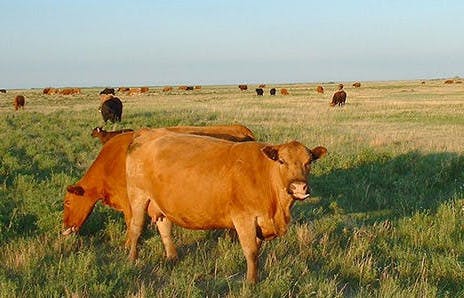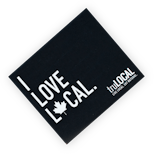
It is no secret that Canadians love their beef. Whether eating steaks fresh from the barbecue, enjoying a spicy chilli, or digging into a classic burger, Canadians each consumed on average more than twenty-five kilograms of beef in 2018 alone, and this number is projected to remain stable in 2019. Food trends may be changing across the country, but one thing is clear: for many individuals and families, beef is a dietary staple.
There are a variety of cultural reasons for this. Canada, a country home to peoples from all over the world, has a rich and varied cuisine; but the availability and quality of Canadian beef is ideally suited to dishes as different as Korean bulgogi, Argentinian milanesa, Hungarian goulash, Ukrainian borscht, Turkish kebabs, and Indonesian satay — as well as Western European classics like steak frites, meatballs, and steak and kidney pies. For millions of Canadians, the taste of beef is the taste of the homeland.
But there are other reasons why beef is such a big hit in this country. Between the rolling hills of the southern Ontario and the great cattle ranges of Alberta’s prairies, Canada has a long tradition of producing some of the best cattle in the world. And with truLOCAL, the only meat delivery services across the country that has specialized from the beginning in providing the very best local and sustainable beef straight to customer’s doors, getting hold of the best Canadian beef is easy.
But while Canadians’ appetite for beef hasn’t changed, the way they think about sourcing it certainly has. Twenty years ago, the local food movement existed only on the cultural periphery; things like the one hundred mile diet were still years away from reaching the mainstream, and most people didn’t think too much about where their meat was coming from.
All of that began to change in the first decade of the new millennium, as a growing awareness of the ecological impact of industrial agriculture began to play a role in consumer choices. Suddenly, there was a genuine interest on the part of consumers in learning more about where their food had come from, and smaller, locally based producers began to realize there was a real market for artisanal meats that had been raised in humane and environmentally responsible ways.
This movement toward local food was abetted by a growing market for less processed food. Foods that had, when they first appeared on supermarket shelves in the mid-twentieth century, once been seen as innovative and modern were criticized for being poor in nutrients and lacking in substantial health benefits. Whole foods, on the other hand, were celebrated for their nutritional value, flavour, and environmental purity.
When it came to meat, this interest in the origins of food also became an interest in how cattle, poultry, and pigs were raised. Massive, industrial-style feedlots had long been criticized by environmentalists and animal rights activists, but they increasingly came under the criticism of health advocates as well.
Ground-breaking books like The Omnivore’s Dilemma and films like Food, Inc. brought these issues into the mainstream, and for families across the country, the question of what to eat for dinner increasingly became one with pressing ethical implications. Given the problematic nature of so many modern farming practices, how were ordinary people to extricate themselves from an industrial food system that seemed as though it was as unsustainable as it was omnipresent?
The Rise of Grass-Fed Beef
One solution many local-food advocates turned to was grass-fed beef. While most cattle are raised eating grass, at least initially, as beef production became industrialized in the twentieth century, and more focussed around massive feedlot operations, many farmers took to “finishing” their cows on feed mixtures made from grains and corn.
This means — as you will probably know if you have ever gone looking for more info on grass-fed beef — that the true difference between grass-fed and non-grass-fed is actually a difference in the finishing process. All cattle start out eating grass, but grass-fed beef cattle are raised eating only grass.
The grain finishing process made it possible to fatten cattle up faster and get them to market sooner, and it quickly became a standard practice both in large-scale industrial operations and on local farms. In and of itself, there is nothing bad or harmful about grain finishing, but it does change the composition and flavour of the meat.
For example, grass-fed beef tends to be significantly leaner than grain-finished, with less fat marbling and a darker colour. This is indicative of one of the biggest overall differences between grass-fed and grain-finished, which is fat content: one thing most food writers agree on when talking about grass-fed beef’s distinctiveness is the way an all-grass diet changes the ways in which fat is stored in the animal’s body.
This comes out in the flavour as well: grass-fed striploin steaks are going to have an earthier, more complex flavour that often reminds first-time eaters of game meats like deer and moose (which makes sense, given that deer and moose also tend to have a wild plant-based diet). It also changes how you cook the meat: because of its lower fat content, grass-fed beef becomes tough more easily, which means that you have to take greater care when preparing the meat.
Many chefs find that grass-fed beef benefits greatly from being tenderized and marinated, and it is common for cooks working with grass-fed cuts to be more liberal in their use of olive oil and butter. Most people who complain that grass-fed beef is tougher and less enjoyable than grain-finished are simply not cooking it correctly.
Grass-Fed vs. Grain-Finished: Is There Really a Difference?
In the years since grass-fed beef became a major market trend, it has become common to see claims that grass-fed beef is healthier for consumers. While the debate is ongoing, most experts now agree that while grass-fed probably has a slight edge on grain-fed in terms of health value, the difference is negligible.
As for the difference in environmental impact, grass feeding certainly approximates traditional ways of raising cattle, but it also makes farmers less reliant on processed feeds, in turn reducing the carbon footprint involved in the production of beef cattle. But this does not mean that grain-finished beef is necessarily less environmentally friendly than grass-fed. Rather, these ways of raising cattle can be seen as complementary, each producing a distinct type of beef that is valued by diners who have a taste for it.
This is in part because grain-finished beef is not necessarily feedlot beef; many small-scale producers focused on artisanal methods of husbandry grain-finish their beef to produce high quality, deliciously marbled steaks, and it is definitely possible to buy grain-finished beef that is locally and sustainably sourced. Buying grain-finished beef does not necessarily mean purchasing a less ethically produced product.
But this isn’t to say that there won’t be significant differences in other ways. A 100% grass-fed ribeye steak will have a different flavour profile from a ribeye that is grain-finished (and, depending on which health experts you cite, it may be slightly healthier than the grain-finished ribeye), but the difference mostly comes down to preference. Those who love the earthier, more distinctive flavour of grass-fed beef will likely gravitate toward it, while those who prefer a more traditional beef flavour will probably find that it takes some getting used to.
What ultimately matters much more are the overall conditions in which the cow was raised. A concentrated animal feedlot operation where thousands of head of cattle spend miserable loves crowded around the trough is not going to turn out high-quality meat, and it certainly isn’t going to turn out meat that is sustainable. All of the evidence points to the fact that these massive operations will need to be discontinued if the world is to move toward a more sustainable model of food production.
So what does this mean for the consumer? It means that the first question you should ask about your beef is not whether it is grass-fed or not (unless, of course, you absolutely love the flavour of grass-fed), but whether it has been raised locally and in sustainable ways. At truLOCAL, we are proud to source both grass-fed and grain-finished beef from providers who are passionate about sustainable food systems.
One of the many things that set us apart from other meat delivery services is the fact that we are passionate about only sourcing the best. To this end, we have cultivated relationships with dozens of local farming operations in Ontario, Alberta, and British Columbia. All of the producers we work with share our commitment to ethical production and environmental stewardship, and we provide full transparency via our website about where every product in our meat deliver boxes is coming from.
Whether you are looking for the very best grass-fed beef from in-province farms that go the extra mile to ensure that their animals are raised solely on pasturage, or you want to eat your fill of classic, well-marbled grain-finished cuts of filet mignon, striploin, and ribeye, with truLOCAL, you know you are getting a sustainable, humane, and ethically produced meal.
But this isn’t the only thing that makes us different from other kinds of meat delivery: not only is our product superior, but our service itself is also more customer-centric.
We launched truLOCAL because we believed that it should be possible for any person in Canada to purchase sustainable local meat and have it delivered straight to their door, no matter where they live. If you want to understand how the service works, the best thing to do is get started with your order today — with our easy-to-navigate website and intuitive points-based system of building orders, we make it easy for you to select the meats you want, and because we give you the option of setting a repeating order to be filled every two or three weeks, or monthly, it’s easy to ensure that you always have high-quality meat available.
Unlike other meat delivery services, however, we don’t require you to subscribe to regular delivery, and there are no contracts involved. At truLOCAL, we understand that the thing most shoppers want most out of a delivery service, after high-quality product, is flexibility, so even if you do opt for a repeating order, should you ever want to pause it or skip an instalment, we make it easy to do so.
When it comes to delivery, we’re also different from the competition. Our box sizes are designed for single individuals and families, and because each cut comes individually wrapped in a refrigerated container, you don’t need to worry about being home to receive your order in person: we can leave your box on your doorstep or with your building concierge; we can even deliver to your office, gym, or cottage!
This means that beef fans in Ontario, British Columbia, and Alberta never need to go without their favourite cuts; with truLOCAL’s fresh meat delivery service, the best beef in the country is never more than a couple of clicks away. No matter where you fall on the grass-fed/grain-finished divide, we can hook you up with exactly the meat you’re looking for.
If you’re tired of supermarket beef that doesn’t provide any information about the origin of the meat or how it was produced, why not switch to truLOCAL and start shopping for your beef the twenty-first century way? Order your first meal box today, and find out for yourself why so many Canadians are turning to meat delivery services to get the food they want in the most convenient way possible.
Posted on
September 22nd, 2023







